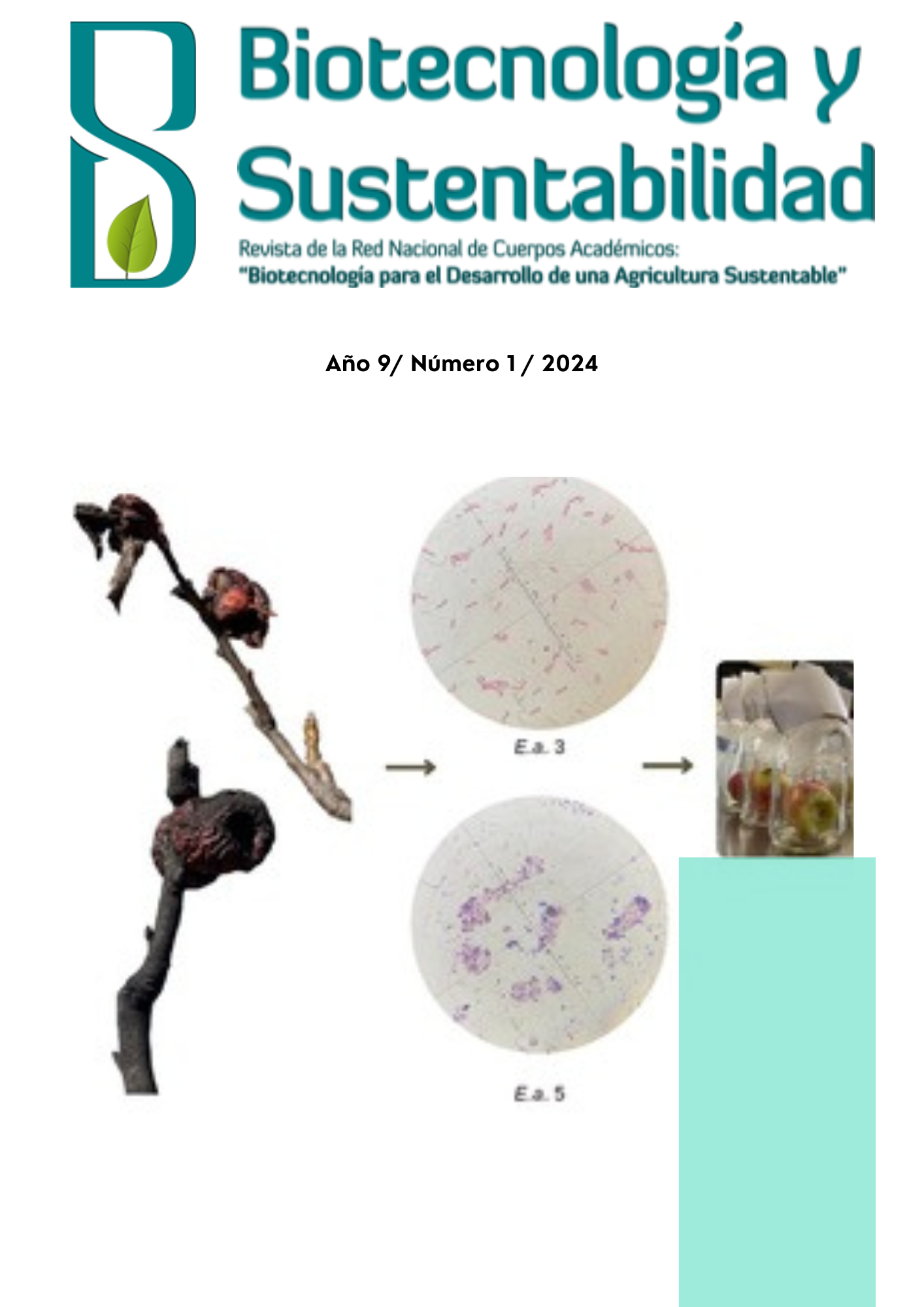Soil microorganisms and their eternal relationship with plants: Soil Microorganisms and their Eternal Relationship with Plants
Published 2024-12-27
How to Cite
Abstract
In this work, the natural relationship that exists between the microorganisms present in the soil such as bacteria, actinobacteria, fungi of various types, among many others, and the roots of plant species is presented. These microorganisms have an intimate relationship with plants, because they take advantage of the substances that the roots excrete such as amino acids and organic acids to feed, reproduce, and make the roots their habitat. On the other hand, microorganisms give the roots of plants various benefits such as stimulation of plant growth through different activities or mechanisms such as the uptake or fixation of atmospheric nitrogen, production of organic substances that help solubilization, mobility and availability of minerals such as nitrates, phosphorus and calcium from the soil and produce phytohormones that help root development. Microorganisms also help plants protect against some pathogens through different mechanisms of action such as: competition for space and nutrients, production of substances with antifungal and antibacterial properties. In this way, emphasis is placed on the advantage that associating with microorganisms brings to plants and that this relationship must be eternal for the benefit of both species.
Downloads
References
- Alcantara-Cortes, J. S., Acero Godoy, J., Alcántara Cortés, J. D., y Sánchez Mora, R. M. (2019). Principales reguladores hormonales y sus interacciones en el crecimiento vegetal. Nova, 17(32), 109-129. http://www.scielo.org.co/scielo.php?pid=S1794-24702019000200109&script=sci_arttext
- Arias-Mota, R. M., Romero-Fernández, A. D. J., Bañuelos-Trejo, J. y Cruz-Elizondo, Y. D. L. (2019). Inoculación de hongos solubilizadores de fósforo y micorrizas arbusculares en plantas de jitomate. Revista Mexicana de Ciencias Agrícolas, 10(8), 1747-1757. https://doi.org/10.29312/remexca.v10i8.1558
- Cabrera, E. V. R., Bonilla, B., y Aguilar, M. (2018). Interacciones entre plantas y bacterias promotoras de crecimiento vegetal. Revista Citecsa, 10(15), 23. https://www.proquest.com/openview/095b7a5b32005fa2df9eba0e53d63903/1?pq-origsite=gscholar&cbl=2043072
- Cadena-Zamudio, J. D., Martínez-Peña, M. D., Guzmán-Rodríguez, L. F., Arteaga-Garibay, R. I., y De Morelos, T. (2016). Aplicación de secuenciación masiva para el estudio y exploración de diversidad microbiana y su aprovechamiento biotecnológico. Agroproductividad, 9(2), 70-83. https://revista-agroproductividad.org/index.php/agroproductividad/article/view/723
- Castaño, A. M. P., Durango, D. P. M., Polanco-Echeverry, D., y Arias, J. A. C. (2021). Rizobacterias promotoras de crecimiento vegetal (PGPR): Una revisión sistemática 1990-2019. Revista de Investigación Agraria y Ambiental, 12(2), 161-178. https://doi.org/10.22490/21456453.4040
- Corrales Ramirez, L. C., Arevalo Galvez, Z. Y., y Moreno Burbano, V. E. (2014). Solubilización de fosfatos: una función microbiana importante en el desarrollo vegetal. Nova, 12(21), 68-79. http://www.scielo.org.co/scielo.php?pid=S1794-24702014000100006&script=sci_arttext
- De-Bashan, L. E., Holguin, G., Glick, B. R., y Bashan, Y. (2007). Microbiología agrícola. Hongos, bacterias, micro y macrofauna, control biológico, planta-microorganismo. Bacterias promotoras de crecimiento en plantas para propósitos agrícolas y ambientales. Editorial Trillas, 170-224. https://www.researchgate.net/publication/255484106_Plant_growthpromoting_bacteria_for_agriculture_and_the_environment
- León-Fajardo, M., Mancilla-Felipez J. D., & Ortuño-Castro, F. N. (2019). Evaluación de bacterias endófitas promotoras de crecimiento en el cultivo de quinua. Journal of the Selva Andina Biosphere, 7(2), 88-99. http://www.scielo.org.bo/pdf/jsab/v7n2/v7n2_a03.pdf
- Moreno-Reséndez, A., Carda-Mendoza, V., Reyes-Carrillo, J. L., Vásquez-Arroyo, J., y Cano-Ríos, P. (2018). Rizobacterias promotoras del crecimiento vegetal: una alternativa de biofertilización para la agricultura sustentable. Revista Colombiana de Biotecnología, 20(1), 68-83. http://www.scielo.org.co/scielo.php?pid=S0123-34752018000100068&script=sci_arttext
- Ona-Yanez, L. (2021). Plantas y microorganismos rizosféricos: Una vía sostenible para generar crecimiento vegetal. Revista Científica Interdisciplinaria Investigación Y Saberes, 11(3), 110-131. https://orcid.org/0000-0001-5958-9057
- Pedraza, L. A., López, C. E., y Uribe-Vélez, D. (2020). Mecanismos de acción de Bacillus spp. contra microorganismos fitopatógenos durante su interacción con plantas. Acta biológica colombiana, 25(1), 112-125. http://www.scielo.org.co/scielo.php?pid=S0120548X2020000100112&script=sci_abstract&tlng=en
- Velasco-Jiménez, A., Castellanos-Hernández, O., Acevedo-Hernández, G., Aarland, R. C., y Rodríguez-Sahagún, A. (2020). Bacterias rizosféricas con beneficios potenciales en la agricultura. Terra Latinoamericana, 38(2), 333-345. https://doi.org/10.28940/terra.v38i2.470
- Vinchira-Villarraga, D. M., y Moreno-Sarmiento, N. (2019). Control biológico: Camino a la agricultura moderna. Revista Colombiana de Biotecnología, 21(1), 2-5. http://www.scielo.org.co/scielo.php?pid=S012334752019000100002&script=sci_arttext

